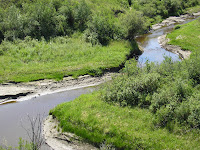Switch: How to Change Things when Change is Hard - Part Three
This is the final section of a three-part summary ( Part One and Part Two ) of the key ideas in Switch: How to Change Things when Change is Hard by Chip Heath and Dan Heath. Good luck with your change efforts! Shape the Path We have a tendency to blame problems on the people, not the situation. If we are annoyed with our spouse or a co-worker, we blame it on their personality, whereas the problem may actually be caused by the situation. “A good change leader never thinks, ‘Why are these people acting so badly? They must be bad people.’ A change leader thinks, ‘How can I set up a situation that brings out the good in these people?’” Tweak the Environment It’s often easier to change the environment than human behaviour. For example, one individual was determined not to use his cell phone while driving so he locked it in the trunk of his car. Lawn mowers and many other pieces of machinery have an automatic off to make sure that people don’t cut their toes or fingers off. “Tweaking




.jpg)

